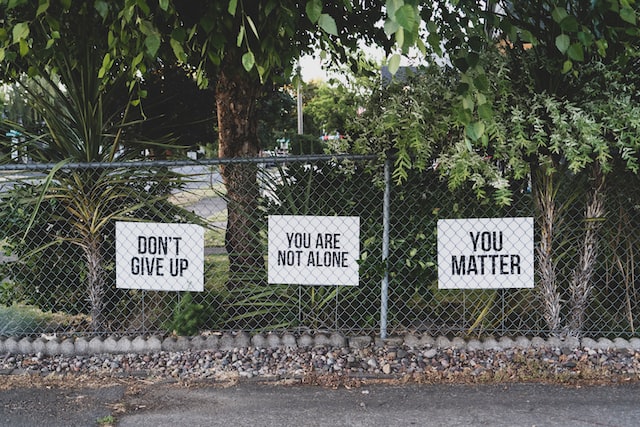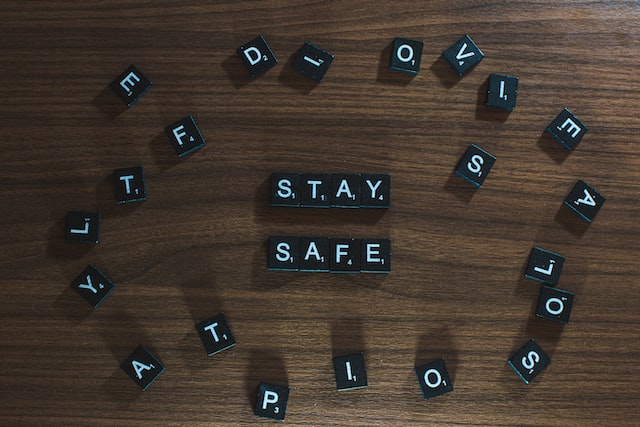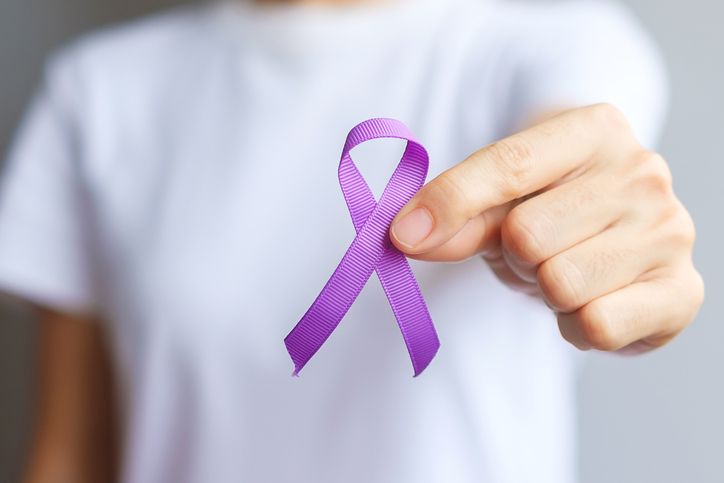If you or a loved one is experiencing domestic abuse, please reach out for help. You can contact the National Domestic Violence Hotline at 1-800-799-SAFE.
Domestic violence can affect people of every gender and from all walks of life. According to recent statistics from the National Coalition Against Domestic Violence, over 10 million adults experience some form of domestic violence each year. One in four women and one in 10 men experience some form of sexual or physical violence and/or stalking by a partner within a lifetime. Nationwide, domestic abuse hotlines receive approximately 19,000 calls for assistance every day. Survivors of domestic violence who are on their journey to independent living face many challenges ahead. This doesn’t just mean finding a house with a good security system, it also means making that space feel authentic and peaceful so the survivor can put down roots.
Table of Contents
- What to know about domestic violence
- Housing for domestic violence survivors
- Not a DV survivor? Here’s what you can do to help
- Domestic violence and homelessness
What to know about domestic violence

It’s important to understand just how prevalent domestic violence is in the United States, whether it’s from a partner, parent, or someone else. Here are some fast facts regarding the issue in America.
- Annually, approximately 15% of all violent crime is due to intimate partner violence in the United States.
- Around 20 people per minute are physically abused by a domestic partner, according to the National Coalition Against Domestic Violence.
- In approximately 19% of domestic violence incidents, a weapon of some kind is used.
- Female survivors of domestic violence are three times more likely to report mental health issues.
- Each year, 1 in 15 children is exposed to domestic violence in the United States.
- One in every five U.S. female high school students reports physical or sexual abuse by someone they’re dating or have dated.
- Approximately 72% of all murder-suicides in the U.S. are a result of intimate partner domestic violence.
Abuse takes on many forms, and it’s not always physical. Melanie Carson, a Ph.D. candidate studying domestic violence, says, “These acts of abuse can impact survivors long after they have a lengthy abusive relationship.” Here are three major categories of domestic abuse and what it may entail.
- Physical: This is the most obvious form of abuse and involves things like hitting, punching, slapping, or kicking a partner. Physical abuse may also include burning, strangulation, and destroying the survivor’s property and belongings. In some cases, the use of a firearm or other weapons is involved. Some partners may also coerce the other person into substance abuse to gain control.
- Psychological: This form of abuse can have lasting damaging effects. It may include isolating a partner and keeping them from family and friends or using “gaslighting” to convince them that the abuse is all in their head. Shame, humiliation, stalking, and name-calling are also common markers of emotional abuse from partners, parents, and others.
- Financial: If someone controls your finances, they have better control over you. Financial abuse may include controlling the other person’s bank account, credit cards, and how they spend their money. The abuser may gain access to the survivor’s online passwords to get into their bank accounts and other financial accounts. They may run up the person’s credit card with no intention of paying it back or take out loans under the person’s name.
Housing for domestic violence survivors

All people deserve safety, security, and peace of mind. Finding and securing safe housing is a vital step on their journey towards healing. A lack of safe, affordable housing is a common barrier – it’s difficult to leave an abusive relationship if you don’t have a safe place to go. Whether you’re planning to leave on a permanent or temporary basis, securing a safe space and safe home is crucial.
Temporary housing options
Transitional or temporary housing is a short-term form of housing that typically includes supportive services to address the immediate needs of domestic violence survivors. Many assistance programs across the United States now offer transitional housing options. They give survivors a safe, stable place to live while searching for permanent housing.
According to Melissa Hoppmeyer, Chief of the Special Victims Unit and a domestic violence podcast co-host, “Statistics show that it takes an average victim seven times to leave an abusive relationship, and when they leave, it can be with only the clothing on their back.”
DV shelters. Most counties have emergency shelters specifically designed for those experiencing domestic abuse.The National Domestic Violence Hotline has helpful resources, referrals for shelters, and advice on implementing an effective safety plan. Live chat online is also available. Many shelters provide additional resources such as referrals for mental health help, job placement programs, group support, and more.
Shelter resources by state
Call: 1.800.799.SAFE (7233)
Text: “START” to 88788
Click your state below to be directed to a state resource that can help you find local shelters.
Alternative short-term housing. Your local government and community may have other short-term housing resources available to you. Check your local Volunteers of America and local outreach websites for “short-term housing in (your city)” to find the results closest to you. This may include homeless shelters or housing for other types of needs.
You may also consider living with loved ones. If you have trusted family members nearby, consider asking if you can move in with them temporarily. This can also include close friends if your abuser doesn’t know where you are. Stay with someone you trust to maintain your privacy so you’re in a place where you know the abuser can’t find you. You may consider filing a protective order (or restraining order) with your local police department to deter the abuser from contacting or pursuing you.
Independent living
Some DV survivors will utilize temporary housing to get to a place where they’re ready to live on their own. Others may transition directly from living with an abuser into independent living. Regardless, there’s a lot to consider when choosing a place to live. Feeling safe and secure is the top priority, and feeling a sense of authenticity and peace is a close second as resources and needs allow.
For those who need help to get to a place where they can afford independent living, consider these programs for financial literacy:
- SavvyLadies.com
- The National Endowment for Financial Education
- Women’s Institute for Financial Education
- The National Coalition Against DV (NCADV)
Your options may include renting or buying a house, condo, townhome, or apartment. If you decide to live in independent housing, keep these tips in mind so you can keep your new safe space secure:
Choose a comfortable location
Most people looking for housing will be limited by their budget, among other factors. As your budget allows, consider choosing a location that offers extra bits of security, including:
- Neighborhoods or apartment complexes with code-protected gates
- Areas that are away from your abuser’s commute and typical destinations
- Homes that are within walking distance from jobs or other resources you may need
- Areas with strong neighborhood watch programs
- Living situations with no or minimal windows and doors that open into public spaces
Add security if you can

Extra security features can be a simple way to add peace of mind to your new home. Before you purchase the gadgets below, consider whether they’ll make you feel safer or potentially create an emotional burden for you. Security cameras and lights can be helpful for some, but cause others to hyper-fixate in an emotionally difficult way.
Security cameras are excellent security tools to help you monitor activity around your home. Choose a high-definition security camera with an app so you can view footage anytime, from anywhere. Look for outdoor security cameras with a pan-tilt-zoom option so you can move the camera around or zoom in if you need to get a better view.
Install alarms on your doors and windows to alert you to any suspicious activity. You can sign up for a monitoring service, so the authorities will be notified whenever there’s any unusual activity or a security breach around your new home. Monitoring services also alert if there’s a fire; they’re a great way to provide you with peace of mind.
Upgrade your door lock screws to longer, four-inch screws that make it more difficult for criminals to kick in the door. Install deadbolts on all exterior doors and use other door enforcements that make it tougher for people to try and gain entry. Install security bars on sliding glass doors to add another barrier.
Install window sensors or glass break sensors on every window in your home, so you’re alerted when they’re opened from the outside. Glass break sensors sound an alarm whenever the glass on a window breaks. Focus on the windows on the first floor first, since this is where most people will attempt to break in.
Use motion-activated lights to help deter criminal activity. When the lights sense any motion, they turn on instantly to help illuminate your garage, driveway, and yard. If you need help installing motion-activated lighting, contact a handyman near you to help with the installation process. You can also place a pair of work boots or a large dog bowl on your front porch to give the illusion that a big dog or another adult is living with you.
Consider a restraining order. While a restraining order isn’t always a guarantee that your abuser won’t contact you, it does give you more leverage. Contact your local police department and inform them that you’d like to file. If the person attempts to make contact with you after the restraining order is approved, they could run the risk of being arrested and serving jail time.
Make your new home your own

After you’ve found safe housing, it’s time to get settled and start making your new home a place that’s all your own. This is important for a few reasons. First, the more comfortable your home is, the easier it will be to feel at peace there. And second, some people leaving abusive situations may feel a sense of powerlessness and lost identity. As simple as picking out home furnishings is, it can go a long way to restoring your personal power.
Here are some tips to help make you feel comfortable, appreciated, and like you at home:
- Start with a calming color. Sometimes it can be hard to know where to start when adding decorations to your home. Starting with “calm” is a great option for DV survivors. Greens, blues, and lavenders complement each other and can help your home feel like an oasis.
- Create, find, or purchase artwork that you like as a focal point. While not everyone has an extensive collection of art, creating or finding something that resonates with you can turn a blank room into one that feels like home. If you’re on a budget, thrift stores can be a good place to start. You can even create your own artwork or ask a friend or family member.
- If you have kids, make sure you provide them with a safe, fun place to spend time. Designate a separate playroom or area in your home where they can do homework, watch TV, play, or work on arts and crafts.
- Add some of your favorite feel-good items, like a soft, fuzzy bathrobe, a new coffee maker, or a stocked pantry filled with all your favorite snacks.
- Don’t feel rushed to make your new home personal. Instead, take your time, go slowly, and work your way toward feeling more comfortable by starting small and focusing on the basics. This could be adding new bedding, an area rug to your bedroom, or simply creating a new layout for your new living room furniture.
Not a DV survivor? Here’s what you can do to help
Domestic violence affects people of all genders, backgrounds, and social circles. If you know someone who’s a survivor of domestic abuse or domestic violence, it’s important to show your support in any way you can. Here are some ideas about how you can help:
- Donate clothing to reputable organizations in need. Some examples include Sanctuary for Families, Futures Without Violence, and the Urban Resource Institute. Contact local charities in your area to learn more about their specific clothing needs. Giving people quality clothing is extremely beneficial for their healing journey.
- If you have any extra furniture, many shelters can also use these items. Consider donating a sofa or a bed frame, or donate a new mattress to local domestic violence shelters. Some shelters even offer free pick-up of your items, so all you have to do is call them and let them know what you have. You can even use your donations as a deduction on your tax return.
- Look for local support groups where you can participate, particularly if you’ve been a survivor of domestic violence. Go online and look for local events near you, including fundraisers, vigils, and other meaningful events that will help to make a positive impact. If you have experience with DV, ask local shelters or support groups if you can speak to others about what you went through. Not only will it be cathartic for you, but it will also help others to hear your story.
- Become a survivor advocate and help others through this difficult time. Look for resources where you can register to take courses and become a survivor advocate online. Check listings near you to find out more about training programs that show you how to be an advocate for others.
Domestic violence and homelessness
There’s a strong correlation between domestic violence and homelessness.
- Between 22 and 57 percent of all homeless women state that the direct cause of their homelessness was domestic violence.
- Over 90% of homeless women have experienced severe physical or sexual abuse during their lifetime. Approximately 63% were survivors of intimate partner violence as adults.
- One survey found that over 80% of survivors entering shelters stated that they needed to find housing they could afford, which was second only to finding “safety for myself.”
If you’re looking for ways to support people experiencing domestic violence in your area, consider supporting causes that help with homelessness. Here are a few ways you can get involved:
- Fundraise for local shelters and housing programs.
- Advocate for people experiencing homelessness by writing letters, emailing, or calling public officials. Ask what City, county, and state officials are doing to support your community.
- Volunteer directly at a shelter, offer professional skill training, or organize an event.
Today, many domestic violence programs are embracing this new commitment and working on implementing new programs and strategies that address the housing needs of DV survivors. Some may offer to help pay for housing costs, while others may advocate to support and strengthen tenant rights. Some may intervene with landlords to remove housing barriers based on things like evictions and debt, which are common issues that DV survivors face.
If you or someone you know lives in an abusive household, there’s always help and hope available. Through advocacy and assistance, domestic violence survivors can begin their healing journey. Providing safe, stable housing is the first stepping stone toward giving these strong survivors the opportunity to live a happy, peaceful life.




